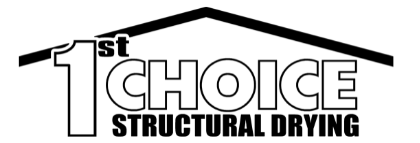The Crucial Role of Structural Drying in Mold Remediation: Preventing Mold Growth
Mold growth is a common concern for homeowners, especially following water damage incidents. Mold not only poses risks to the structural integrity of buildings but also presents potential health hazards to occupants. Understanding the crucial role of structural drying in mold remediation is essential for preventing the growth and spread of mold. This blog post will delve into the significance of preventing mold growth after water damage and highlight how proper structural drying plays a pivotal role in effective mold remediation. By exploring the relationship between water damage and mold, we can equip homeowners with the knowledge to address these issues promptly and create a healthier living environment.
Understanding Mold and its Health Risks
A. Overview of mold and its common types:
Mold is a type of fungus that thrives in moist environments. It reproduces by releasing tiny spores into the air. There are various types of mold commonly found indoors, including Aspergillus, Penicillium, Cladosporium, and Stachybotrys chartarum (commonly known as black mold). Each type has its own characteristics and may present different health risks.
B. Health risks associated with mold exposure:
Exposure to mold can have adverse effects on human health. Mold spores, when inhaled, can trigger allergic reactions in susceptible individuals, leading to symptoms such as sneezing, coughing, wheezing, and skin rashes. Prolonged exposure or exposure to high concentrations of mold spores may cause more severe reactions, especially in individuals with respiratory conditions or compromised immune systems.
C. Factors that contribute to mold growth:
Mold requires certain conditions to grow and thrive. These conditions include moisture, a suitable temperature range, and organic materials for food. Areas with high humidity levels, water leaks, condensation, or inadequate ventilation are particularly prone to mold growth. Common areas where mold can thrive include basements, bathrooms, kitchens, and areas affected by water damage or flooding.
Understanding the basics of mold and its potential health risks is crucial in comprehending the importance of preventing mold growth in homes. By addressing water damage promptly and implementing effective structural drying techniques, homeowners can minimize the risk of mold infestation and protect the well-being of themselves and their families.
The Link Between Water Damage and Mold Growth
A. How water damage creates favorable conditions for mold:
Water damage, whether from a leaky pipe, a roof leak, flooding, or a plumbing issue, creates the ideal environment for mold growth. When excess moisture is present, mold spores that are naturally present in the air can settle on damp surfaces and begin to multiply. The moisture provides the necessary sustenance for mold to thrive and colonize.
B. Common areas prone to mold growth after water damage:
Certain areas within a home are particularly susceptible to mold growth following water damage. Basements, crawl spaces, attics, and areas around plumbing fixtures are common hotspots. Additionally, walls, ceilings, carpets, and furniture that have been exposed to water or excessive moisture are at risk of developing mold if not properly dried and treated.
C. Timeline for mold growth in damp or wet environments:
Mold can begin to grow within 24 to 48 hours of water damage occurring. In a moist environment, mold spores can quickly colonize and spread, forming visible patches and releasing more spores into the air. The longer water-damaged areas remain wet or damp, the higher the likelihood of extensive mold growth and the potential for structural damage.
Understanding the link between water damage and mold growth emphasizes the importance of addressing water intrusion and initiating structural drying as soon as possible. Timely intervention can prevent or minimize the extent of mold growth, mitigating potential health risks and the need for extensive remediation efforts. By recognizing the urgency of proper drying, homeowners can take proactive steps to prevent mold infestations and safeguard their living spaces.
The Role of Structural Drying in Mold Remediation
A. Importance of prompt and thorough structural drying:
Prompt and thorough structural drying is crucial in preventing mold growth and mitigating the associated risks. By removing excess moisture from affected areas, structural drying creates an environment that is unfavorable for mold spore germination and growth. It helps halt the progression of mold and reduces the need for extensive mold remediation in the future.
B. How structural drying prevents mold growth:
Structural drying aims to eliminate moisture from building materials, such as walls, floors, and ceilings. This process involves the use of specialized equipment, such as dehumidifiers, air movers, and moisture meters, to extract moisture and promote evaporation. By drying the affected areas quickly and effectively, structural drying inhibits the growth of mold spores and helps restore a dry and healthy indoor environment.
C. Techniques and equipment used in structural drying:
Structural drying professionals employ various techniques and equipment to ensure efficient drying. This may include the use of powerful air movers to enhance airflow and promote evaporation, dehumidifiers to remove excess moisture from the air, and moisture meters to monitor and measure moisture levels in materials. Professionals may also employ heat drying methods or utilize specialized drying chambers for specific situations.
D. Benefits of professional structural drying services:
Engaging professional structural drying services offers several benefits. Experienced professionals possess the knowledge, skills, and equipment necessary to assess the extent of water damage, implement appropriate drying techniques, and monitor the progress of drying effectively. They can ensure that all affected areas are thoroughly dried, reducing the risk of hidden moisture pockets and potential mold growth. Professional structural drying services help minimize the chances of mold-related health issues, structural damage, and the need for costly mold remediation in the future.
Steps for Effective Structural Drying and Mold Prevention
A. Assessing the extent of water damage:
Professionals will conduct a comprehensive assessment to determine the extent of water damage and identify affected areas. This assessment helps create an effective drying plan and ensures that all impacted areas receive the necessary attention.
B. Extracting standing water and moisture:
Water extraction is a critical step in structural drying. Professionals will use powerful pumps, vacuums, or specialized equipment to remove standing water and excess moisture from the affected areas, preventing further water damage and inhibiting mold growth.
C. Promoting airflow and ventilation for drying:
Airflow and ventilation play a vital role in drying structures effectively. Professionals strategically position air movers and fans to increase airflow and encourage evaporation. This helps expedite the drying process and minimize the potential for mold growth.
D. Monitoring and measuring moisture levels:
Throughout the drying process, professionals utilize moisture meters and hygrometers to measure moisture levels in materials and monitor the progress of drying. This allows them to ensure that moisture is thoroughly eliminated, reducing the risk of hidden moisture pockets and potential mold growth.
E. Implementing antimicrobial treatments, if necessary:
In situations where mold growth has already occurred or there is a high risk of contamination, professionals may apply antimicrobial treatments to affected areas. These treatments help inhibit the growth and spread of mold, further protecting the integrity of the structure and the indoor air quality.
Taking proactive steps for effective structural drying not only prevents mold growth but also helps restore a safe and healthy environment for occupants. By relying on professionals with expertise in structural drying, homeowners can ensure that the drying process is conducted efficiently and thoroughly, minimizing the risk of mold-related health issues and the need for extensive mold remediation.
Signs of Mold Infestation and When to Seek Professional Help
A. Visible signs of mold growth:
Visible signs of mold infestation include discoloration on walls, ceilings, or other surfaces, the presence of fuzzy or slimy patches, and a musty odor. If you notice any of these signs, it is crucial to take immediate action.
B. Musty odors and allergy-like symptoms:
Musty odors, similar to the smell of dampness or rot, often accompany mold growth. Additionally, if occupants experience persistent allergic reactions such as sneezing, coughing, nasal congestion, or eye irritation, it could indicate the presence of mold.
C. When DIY efforts may not be sufficient:
DIY efforts may be suitable for minor water damage situations. However, if the water damage is extensive, or if mold growth is already visible or suspected, it is advisable to seek professional help. Professionals have the knowledge, experience, and specialized equipment to effectively handle significant water damage and mold infestations.
D. Importance of professional mold remediation services:
Professional mold remediation services are essential for cases involving extensive mold growth or hidden mold. Trained professionals can accurately assess the situation, safely remove and remediate the mold, and implement preventive measures to inhibit future mold growth. Their expertise ensures thoroughness and reduces the risk of cross-contamination or inadequate remediation.
Preventive Measures to Minimize Mold Risks
A. Proper maintenance and regular inspections:
Regular inspections and maintenance of the property help identify and address potential water leaks or sources of moisture. Addressing issues promptly prevents prolonged exposure to excessive moisture and minimizes the risk of mold growth.
B. Controlling indoor humidity levels:
Maintaining appropriate indoor humidity levels (ideally below 60%) helps prevent the conditions that favor mold growth. Use dehumidifiers in high-humidity areas, such as basements or bathrooms, and ensure proper ventilation throughout the home.
C. Ensuring proper ventilation in high-moisture areas:
Adequate ventilation is crucial in areas prone to moisture, such as bathrooms and kitchens. Use exhaust fans or open windows during and after activities that generate moisture, such as showering or cooking, to allow excess moisture to escape.
D. Promptly addressing water leaks and plumbing issues:
Water leaks or plumbing issues should be addressed promptly to prevent water damage and subsequent mold growth. Regularly check for leaks, monitor water bills for unexpected increases, and seek professional assistance for repairs as soon as issues are detected.
By following these steps and implementing preventive measures, homeowners can effectively prevent mold growth, protect their properties, and promote a healthy living environment for themselves and their families.
Conclusion
In conclusion, preventing mold growth is crucial for maintaining a safe and healthy indoor environment. The role of structural drying in mold remediation cannot be overstated. By promptly addressing water damage and implementing effective drying techniques, homeowners can mitigate the risk of mold infestation and the associated health risks. Timely intervention, professional expertise, and proper preventive measures are key to safeguarding the integrity of structures and ensuring the well-being of occupants. By taking proactive steps, homeowners can create a mold-free environment that promotes a healthier and happier living space.

